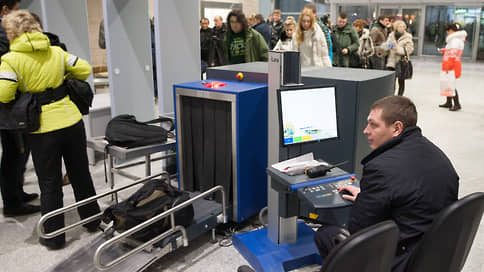Passengers ask for a legal liter – Newspaper Kommersant No. 67 (7512) dated 04/18/2023
[ad_1]

As Kommersant found out, the All-Russian Association of Passengers asked the Ministry of Transport to cancel the rule according to which liquids in containers with a volume of more than 100 ml cannot be taken on board the aircraft. Now a passenger can take up to a liter of liquid in hand luggage, but with a mandatory breakdown by container. The rules were introduced in 2007 after publications about the threat of “liquid terror” in the UK, but since then, according to experts, have become outdated. Modern technology allows you to quickly analyze the liquid right in front of the passenger, but most market participants are not yet counting on concessions due to the tense geopolitical situation and the high income that airports and airlines receive from the sale of drinking water.
The All-Russian Association of Passengers, as it became known to Kommersant, asked the Ministry of Transport to lift restrictions on the carriage of liquids in hand luggage. The requirement was introduced in 2007 by order of the Ministry of Transport No. 104, which allows a passenger to bring on board up to a liter of liquid, but in a container not exceeding 100 ml. Vials and bottles must be packed in a transparent bag. An exception is made only for duty free bottles (then the containers must be sealed in sealed bags), as well as for medicines, baby food and dietary products necessary for the duration of the flight.
“These regulations were adopted after the incident on August 10, 2006 at London airport (when it was reported that the search for terrorists with liquid bombs.— “b”). During this time, there were no such incidents, moreover, inspection activities were significantly modernized, including the use of more modern equipment at airports, ”the letter of April 10 says (Kommersant has it). The organization notes that they regularly receive “fair appeals” from passengers regarding the revision of these rules, and are asked to consider softening or completely abolishing the 100 ml bar so that passengers can bring drinking water or cosmetics within 1 liter.
The head of the association, Ilya Zotov, confirmed to Kommersant that the letter had been sent and stressed that the introduction of amendments should be discussed in detail with the expert industry community. Similar changes are currently being worked out at UK airports. Airports and airlines are reluctant to discuss revising the rules.
“Aviation security services are quite conservative in their approaches, to which there are still no complaints,” the large company noted. Ural Airlines and Smartavia also stressed that there are no conflicts or complaints. The latter added that in its practice “any threats to aviation security related to this topic have not been registered.” At one of the airports in Moscow, they noted that they have equipment that allows them to check the composition of the liquid, but they see no reason to revise the standards.
Market participants call the portable Raman spectrometer KhimExpert-T, which has been mass-produced by Yuzhpolymetall Holding since 2019, the only device certified in the Russian Federation for the analysis of liquids. The principle of operation is as follows: a liquid is illuminated by a laser, in response, the molecules of all chemicals begin to vibrate strictly with certain frequencies, explains Alexei Shablya, Executive Director of the UPH: “The frequencies are recorded by a spectrometer, this is how the exact composition of the liquid is established, including dangerous biological substances. The device identifies about 100 types of explosives, the same number of chemical, 50 types of psychotropic and more than 10 thousand types of pharmaceutical industry products, including water, alcohol and soft drinks.
The cost of the device is just over 2 million rubles, its annual output is up to 300–500 units, which can fully satisfy the needs of all Russian airports. About four dozen airports, according to Alexei Shabl, have already installed the device for trial operation, including at the Moscow air hub, Pulkovo, Kazan, Sochi and Yekaterinburg. Airports and the Ministry of Transport did not answer Kommersant.
In the United States, air passengers can only take up to 100 ml (3.4 ounces) of liquid on an aircraft, including alcohol no stronger than 70%. Most European airports have a 100 ml limit, notes Alexander Lanetsky, CEO of Friendly Avia Support, although liberalization has been actively discussed in EASA over the past few years and concessions are periodically introduced at a number of airports. But before the complete lifting of restrictions, he believes, it will take at least five years. According to the expert, airlines and airports are not interested in changes either: “The sale of water, despite its low cost, but high demand, makes up a significant share of non-aviation revenues.” In the Russian Federation, he believes, in the coming years, relaxation of security requirements as a whole “is hardly possible.”
[ad_2]
Source link





